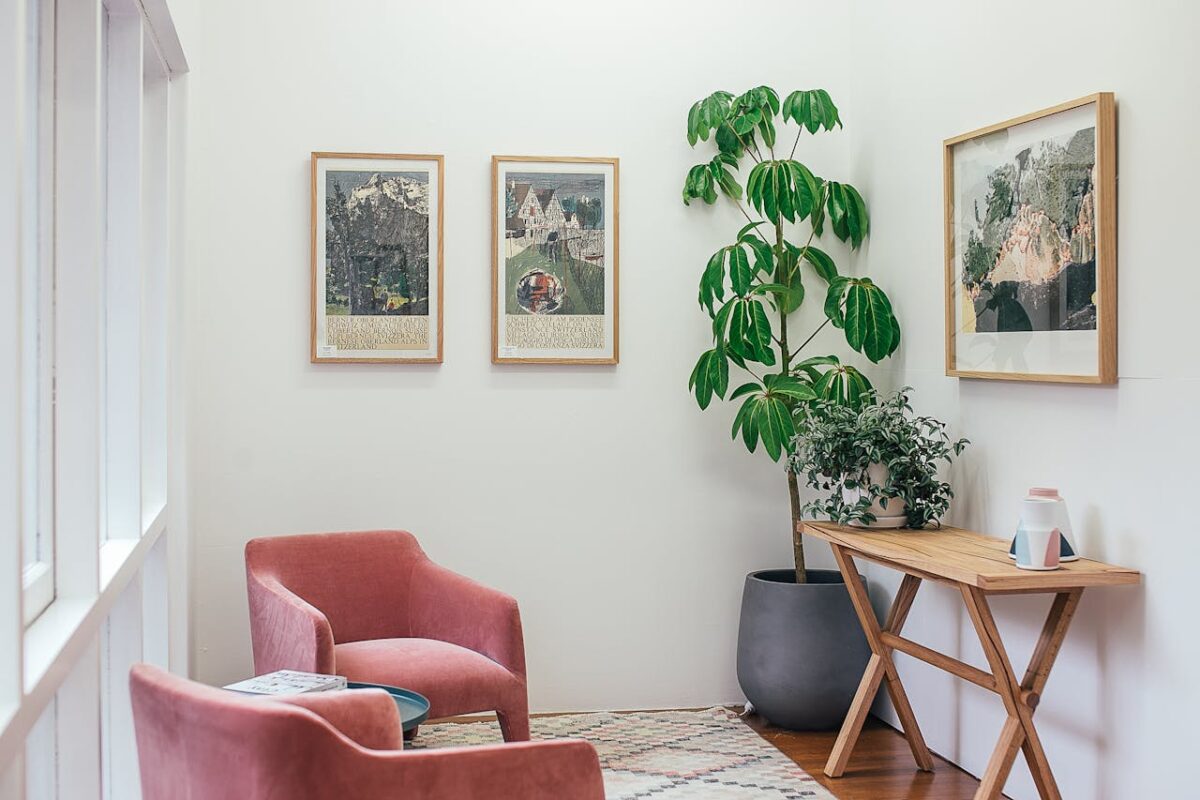When it comes to home decor, art plays a pivotal role in defining and enhancing the aesthetic of a space. Incorporating different art mediums, such as paintings, prints, and sculptures, can add depth, texture, and interest to your interior design. This approach not only enriches the visual appeal but also allows for a more dynamic and personalized environment. Here, we delve into the art of mixing mediums and offer practical tips for combining paintings, prints, and sculptures in your home decor.
The Beauty of Diverse Mediums
Each art form brings its own unique qualities to a space:
- Paintings offer rich textures, colors, and emotional depth. They can be bold or subtle, serving as focal points or complementary pieces.
- Prints are versatile and accessible, often used to replicate famous works or display modern graphic designs. They can be easily switched out to refresh the decor.
- Sculptures add a three-dimensional aspect, contributing to the tactile and spatial experience of a room. They can range from small tabletop pieces to large floor-standing installations.
Combining these mediums can create a layered and cohesive look that speaks to your personal style and enhances the overall atmosphere of your home.
Creating a Harmonious Blend
Successfully blending paintings, prints, and sculptures requires a thoughtful approach. Here are some strategies to help you achieve a harmonious mix:
- Unify Through Color Palette
- Choose a cohesive color scheme that ties different pieces together. This doesn’t mean all art must match exactly, but there should be a thread of common colors or complementary shades that create visual harmony.
- Balance Proportions and Scale
- Vary the sizes of your art pieces to avoid a monotonous look. A large painting can be balanced by a grouping of smaller prints or a significant sculpture. Ensure that no single piece overwhelms the space unless it is intended as the focal point.
- Consider Themes and Styles
- While mixing mediums, maintain a thematic or stylistic consistency. This could be through subject matter (e.g., nature, abstract) or artistic style (e.g., modern, classical). A cohesive theme helps to unify disparate elements.
- Play with Placement and Height
- Varying the placement and height of artworks adds interest. Hang paintings and prints at different levels and place sculptures on shelves, pedestals, or the floor. This creates a dynamic visual flow and prevents a flat, one-dimensional look.
Practical Tips for Mixing Mediums
To implement these strategies effectively, consider the following practical tips:
- Anchor with a Statement Piece
- Start with a large statement piece, such as a bold painting or a striking sculpture, and build around it. This piece sets the tone and can guide the selection of complementary artworks.
- Create Groupings and Clusters
- Group smaller prints and paintings together to form a gallery wall. This can be a mix of framed and unframed pieces for added texture. Combine these with adjacent sculptures to enhance the three-dimensional aspect.
- Use Shelving and Mantels
- Shelves and mantels are perfect for displaying a mix of mediums. Lean a few prints or small paintings against the wall and place sculptures in front to create depth. This setup allows for easy rearrangement.
- Incorporate Art into Functional Spaces
- Integrate art into everyday areas like kitchens, bathrooms, and hallways. Small sculptures on countertops, prints in bathroom nooks, and paintings in entryways can make these spaces more inviting and visually appealing.
- Embrace Negative Space
- Don’t overcrowd your walls and surfaces. Negative space (the empty areas around and between art pieces) is essential for balance and allows each artwork to breathe and be appreciated fully.
Inspirational Ideas
- Modern Eclectic Living Room
- Combine a large abstract painting above the sofa with a collection of black-and-white photographic prints on an adjacent wall. Add a modern metal sculpture on a side table to complete the look.
- Minimalist Bedroom Retreat
- Feature a single, serene landscape painting above the bed. Place a few geometric prints in simple frames on a nearby dresser, and add a small, smooth stone sculpture on a nightstand for a touch of natural elegance.
- Dynamic Dining Area
- Create a gallery wall of vibrant prints in various sizes behind the dining table. Complement this with a bold, colorful painting on a side wall. Use a sculptural centerpiece on the table to tie the look together.
Leveraging Online Art Stores
Online art stores offer a vast selection of art in various mediums, from paintings and prints to sculptures. These platforms feature works from renowned artists like Van Gogh, Monet, and Klimt, as well as emerging talents. Customers can choose from stretched and rolled canvases, framed prints, and customizable photo tiles. These stores provide worldwide shipping, secure payment options, and eco-friendly products, making it easy to find and acquire pieces that fit seamlessly into your home decor plan.
Conclusion
Mixing paintings, prints, and sculptures in home decor is a sophisticated way to enrich your living space. By considering color palettes, proportions, themes, and placement, you can create a cohesive and visually engaging environment that reflects your personal style. Whether you favor modern, eclectic, or minimalist designs, the combination of different art forms will undoubtedly enhance the aesthetic and emotional resonance of your home. Leveraging the wide array of options available through online art stores can further assist in curating a collection that truly transforms your living space.
